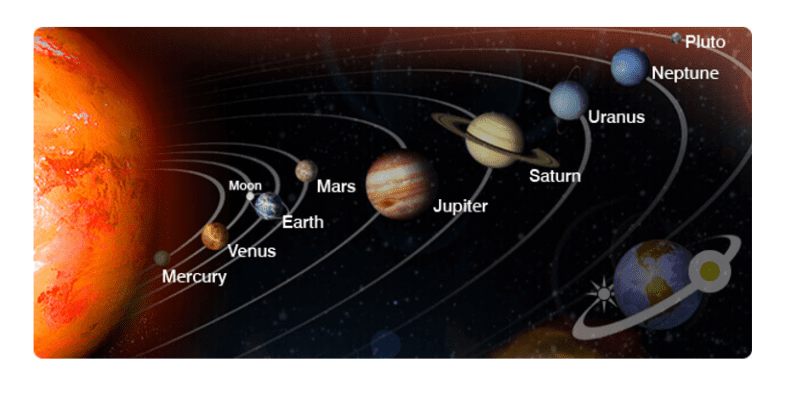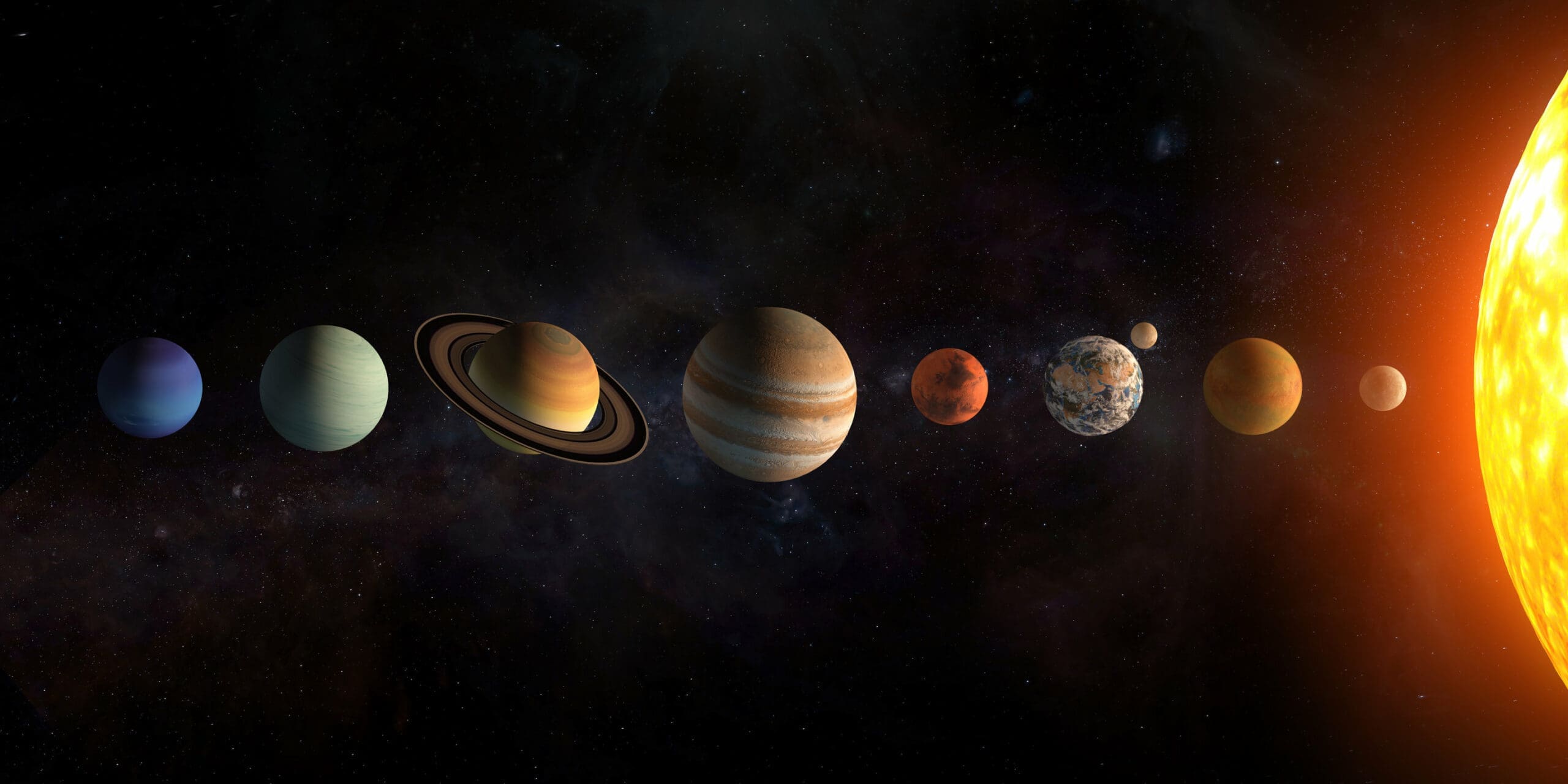In this post
The solar system is made up of all of the things that orbit our Sun. This includes the planets, dwarf planets such as Pluto, moons and artificial satellites. Ideas about the model of our solar system have changed over time. Initially, the Greek astronomer Ptolemy used observations and measurements to devise the geocentric model where the Earth was the centre of the universe. This model suggested that the Sun, Moon, planets and stars all orbited the Earth in circles. The geocentric model was accepted until the mid-18th century when it was replaced by the heliocentric or Copernican model.
In the early 17th century an astronomer known as Galileo Galilei, used a telescope to make observations of the night sky. Using the telescope, he observed moons orbiting around the planet Jupiter. This observation showed him that some objects in the sky orbit around other things rather than the Earth. Galileo also noticed that the planet Venus did not orbit around the Earth but instead orbited around the Sun. These observations proved the geocentric model to be wrong.
Nicolaus Copernicus used these observations to suggest the Copernican or heliocentric model. In the heliocentric model, the Sun is in the centre of the solar system and all of the planets and other objects in the system orbit the Sun. Copernicus suggested that the orbits in the solar system were circular and his model did not include the planets Uranus, Neptune or the dwarf planet Pluto, as his telescope was not powerful enough to see them.
As technology has improved, the telescopes used have become more advanced and allow us to see objects which are much further away in the solar system. These advances have allowed the development of the heliocentric model. Today’s version of the heliocentric model suggests that planets of the solar system orbit the Sun in an elliptical shape rather than circular.
It was previously believed that there were nine planets in our solar system but this has been proved to be incorrect. Pluto, the smallest of the planets, and the one which is furthest from the Sun, has been declassified. It is now no longer classed as a planet but rather a dwarf planet instead. The eight planets of our solar system, and the dwarf planet Pluto, in order of their proximity to the Sun are shown in the diagram below:

Mercury, Venus, Earth and Mars are called the inner planets as they are closest to the Sun. The outer planets follow these, and these are Jupiter, Saturn, Uranus and Neptune.
What makes up the universe?
Stars
Stars give out large amounts of energy in the form of heat and light. They have large masses and are very dense. Their large masses cause planets to orbit around them. The Sun is the star at the centre of our solar system. All of the planets, including Earth, orbit around the Sun.
Moons
Moons are classed as natural satellites because they are smaller than the planet they are orbiting. The Earth has one moon (aptly called ‘the Moon’) but there are actually around 181 moons in our solar system that orbit planets. Jupiter, for example, has 67 moons. Moons do not give off any energy but can reflect light from the Sun which is why we can see the Moon at night.
Galaxies
A galaxy is a large collection of billions of stars, rocks and other matter. Galaxies tend to be millions of times further apart than the stars are within a galaxy. Our Sun is one of the billions of stars contained in the galaxy known as the Milky Way. Galaxies are held together by the force of gravity due to the large collection of mass in their centre. This means that all of the stars travel in elliptical orbits around the galaxy.

Universe
The universe is a large collection of billions of galaxies. This means that the universe contains a lot of empty space, and even though stars and planets can be very large, they are tiny in comparison to the universe as a whole. The distances between stars and galaxies outside of our solar system are so vast that kilometres are too small to be used to measure them. Instead we use a unit known as a light year.
A light year is the distance travelled by light through a vacuum in one year. Light travels extremely fast – 300,000 km/s. So, 1 light year is equivalent to approximately 9,460,000,000,000 km.



